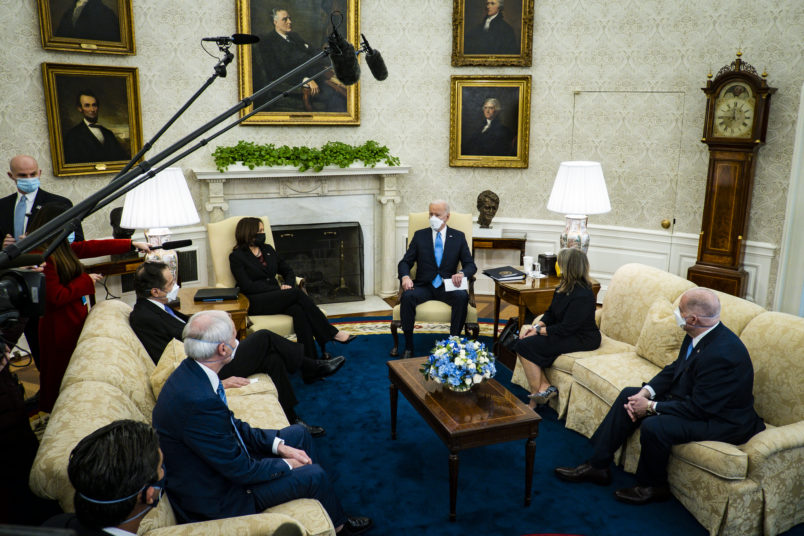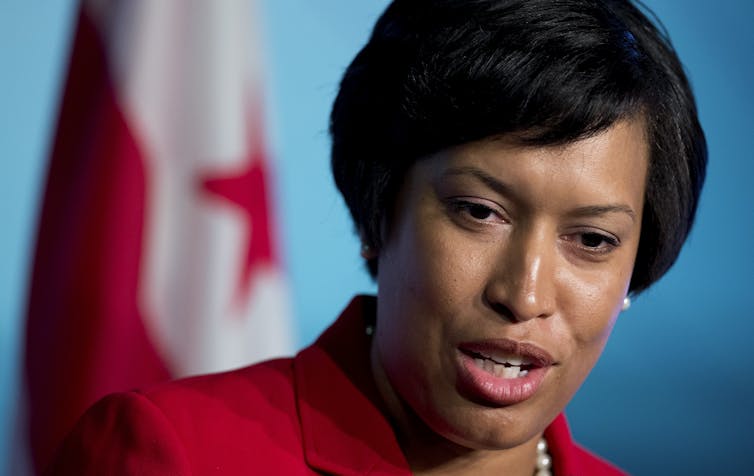Issued on: 24/07/2021 -

Japanese-Haitian tennis star Naomi Osaka lit the Olympic cauldron in the crowning moment of the opening ceremony HANNAH MCKAY POOL/AFP
Tokyo (AFP)
Emili Omuro was thrilled by Naomi Osaka's star turn at the Tokyo Olympics opening ceremony, but the biracial teenager says Japan must do more to accept people of mixed heritage.
Four-time Grand Slam winner Osaka, whose mother is Japanese and father Haitian, climbed a replica Mount Fuji on Friday to light the cauldron in the ceremony's crowning moment.
And she wasn't the only athlete of dual heritage representing the host.
Japanese-Beninese NBA basketball star Rui Hachimura was one of the flagbearers leading Japan's team into the Olympic Stadium.
Osaka and Hachimura are adored in Japan, and boast lucrative sponsorship and advertising deals.
But many young people of black and Japanese heritage still struggle in an often conservative and largely homogenous society.
"There were many times when it was hard," 14-year-old Omuro, born to a Japanese mother and a black American father, told AFP of her childhood in a town north of Tokyo.#photo1
"People would whisper behind my back and make fun of me at extra-curricular clubs, or when I was walking down the street."
Looking to draw attention to the bullying and discrimination faced by some biracial Japanese, Omuro applied and was chosen to be a torchbearer in the nationwide Olympic flame relay before the Games.
She also hoped to highlight the country's increasing but often overlooked racial diversity.
"Some people say, 'for mixed people, bullying is inevitable.' And other people don't know there is discrimination, or pretend not to see it," she said.
- 'Ignorance, not hate' -
When coronavirus measures began to force sections of the relay off public roads, Omuro reconsidered taking part, worried about the pandemic.
But she ultimately decided her participation would be important.
"We need to create a society where people can feel at ease, even if they are different."
Kinota Braithwaite is painfully aware of how discrimination can affect Japanese biracial children.
The black Canadian's daughter Mio, whose mother is Japanese, suffered racist taunts in second grade in Tokyo.
"This happened to me when I was a kid growing up in Canada, and I thought that the world was a place where this wouldn't happen any more," he told AFP.
"So it really broke my heart."#photo2
This year, he published a children's book called "Mio The Beautiful" about his daughter's experience.
And he gives talks in schools to raise awareness of an issue that he says Japanese teachers are often not equipped to handle.
Braithwaite, a teacher himself, sees discrimination in Japan as largely driven by "ignorance, not hate".
Athletes like Osaka and Hachimura give his two children "role models", he said.
And the pair are huge fans -- "My son has a Rui Hachimura water bottle, he has his hair cut like Rui, he plays basketball," he laughed.
"For Japanese people, it sort of opens their eyes too, which is a good thing."
- Representation 'does matter' -
Japan remains a largely homogenous society.
An analysis of government data by Kyodo News agency found just 20,000 of 1.02 million babies born in 2014 had Japanese and non-Japanese parents.
And only recently has the image of mixed Japanese started to include those with black heritage, said Sayaka Osanami Torngren, associate professor of international migration and ethnic relations at Malmo University in Sweden.
"Historically, mixed persons have always existed (in Japan), but the image of mixed persons has always been white or Caucasian and Japanese," said Torngren.
Now, more people of black and Japanese or mixed Asian heritage are "raising their voices and addressing their experiences of discrimination or racism".#photo3
Even stars like Washington Wizards power forward Hachimura and Osaka are not immune to racist language and tone-deaf depictions.
In 2019, Osaka's sponsor Nissin Foods was accused of "whitewashing" over an animated advert depicting the 23-year-old with light skin, and a Japanese comedy duo apologised after joking she was "too sunburned" and needed "bleach".
Hachimura meanwhile revealed this year that he receives racist messages "almost every day".
"There are people who say there is no racism in Japan," wrote his brother Aren Hachimura, posting a hateful message he received online.
"But I want people to pay attention to the issue of racism."
So seeing Hachimura and Osaka represent Japan on the global stage is important, said Torngren.
"Even though it might be token, it does matter."
© 2021 AFP
Tokyo (AFP)
Emili Omuro was thrilled by Naomi Osaka's star turn at the Tokyo Olympics opening ceremony, but the biracial teenager says Japan must do more to accept people of mixed heritage.
Four-time Grand Slam winner Osaka, whose mother is Japanese and father Haitian, climbed a replica Mount Fuji on Friday to light the cauldron in the ceremony's crowning moment.
And she wasn't the only athlete of dual heritage representing the host.
Japanese-Beninese NBA basketball star Rui Hachimura was one of the flagbearers leading Japan's team into the Olympic Stadium.
Osaka and Hachimura are adored in Japan, and boast lucrative sponsorship and advertising deals.
But many young people of black and Japanese heritage still struggle in an often conservative and largely homogenous society.
"There were many times when it was hard," 14-year-old Omuro, born to a Japanese mother and a black American father, told AFP of her childhood in a town north of Tokyo.#photo1
"People would whisper behind my back and make fun of me at extra-curricular clubs, or when I was walking down the street."
Looking to draw attention to the bullying and discrimination faced by some biracial Japanese, Omuro applied and was chosen to be a torchbearer in the nationwide Olympic flame relay before the Games.
She also hoped to highlight the country's increasing but often overlooked racial diversity.
"Some people say, 'for mixed people, bullying is inevitable.' And other people don't know there is discrimination, or pretend not to see it," she said.
- 'Ignorance, not hate' -
When coronavirus measures began to force sections of the relay off public roads, Omuro reconsidered taking part, worried about the pandemic.
But she ultimately decided her participation would be important.
"We need to create a society where people can feel at ease, even if they are different."
Kinota Braithwaite is painfully aware of how discrimination can affect Japanese biracial children.
The black Canadian's daughter Mio, whose mother is Japanese, suffered racist taunts in second grade in Tokyo.
"This happened to me when I was a kid growing up in Canada, and I thought that the world was a place where this wouldn't happen any more," he told AFP.
"So it really broke my heart."#photo2
This year, he published a children's book called "Mio The Beautiful" about his daughter's experience.
And he gives talks in schools to raise awareness of an issue that he says Japanese teachers are often not equipped to handle.
Braithwaite, a teacher himself, sees discrimination in Japan as largely driven by "ignorance, not hate".
Athletes like Osaka and Hachimura give his two children "role models", he said.
And the pair are huge fans -- "My son has a Rui Hachimura water bottle, he has his hair cut like Rui, he plays basketball," he laughed.
"For Japanese people, it sort of opens their eyes too, which is a good thing."
- Representation 'does matter' -
Japan remains a largely homogenous society.
An analysis of government data by Kyodo News agency found just 20,000 of 1.02 million babies born in 2014 had Japanese and non-Japanese parents.
And only recently has the image of mixed Japanese started to include those with black heritage, said Sayaka Osanami Torngren, associate professor of international migration and ethnic relations at Malmo University in Sweden.
"Historically, mixed persons have always existed (in Japan), but the image of mixed persons has always been white or Caucasian and Japanese," said Torngren.
Now, more people of black and Japanese or mixed Asian heritage are "raising their voices and addressing their experiences of discrimination or racism".#photo3
Even stars like Washington Wizards power forward Hachimura and Osaka are not immune to racist language and tone-deaf depictions.
In 2019, Osaka's sponsor Nissin Foods was accused of "whitewashing" over an animated advert depicting the 23-year-old with light skin, and a Japanese comedy duo apologised after joking she was "too sunburned" and needed "bleach".
Hachimura meanwhile revealed this year that he receives racist messages "almost every day".
"There are people who say there is no racism in Japan," wrote his brother Aren Hachimura, posting a hateful message he received online.
"But I want people to pay attention to the issue of racism."
So seeing Hachimura and Osaka represent Japan on the global stage is important, said Torngren.
"Even though it might be token, it does matter."
© 2021 AFP







